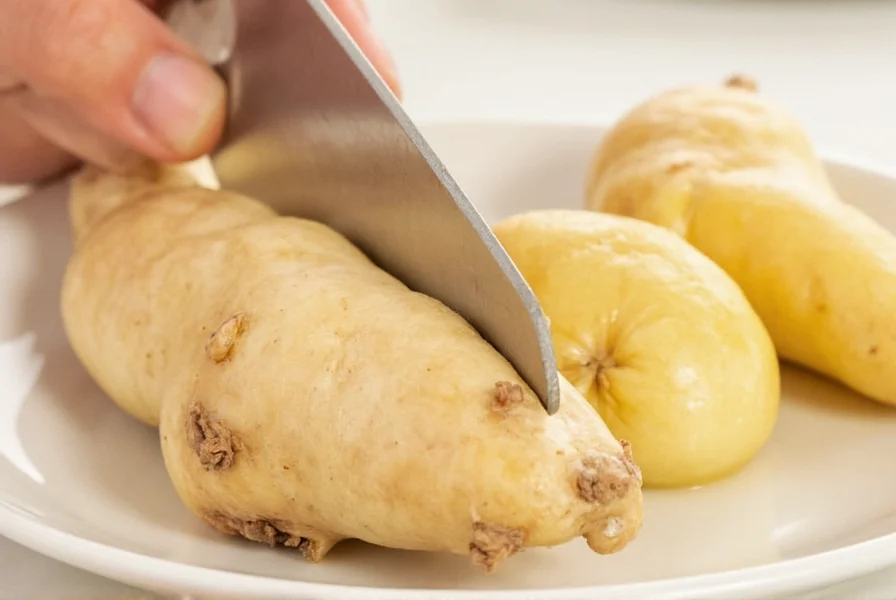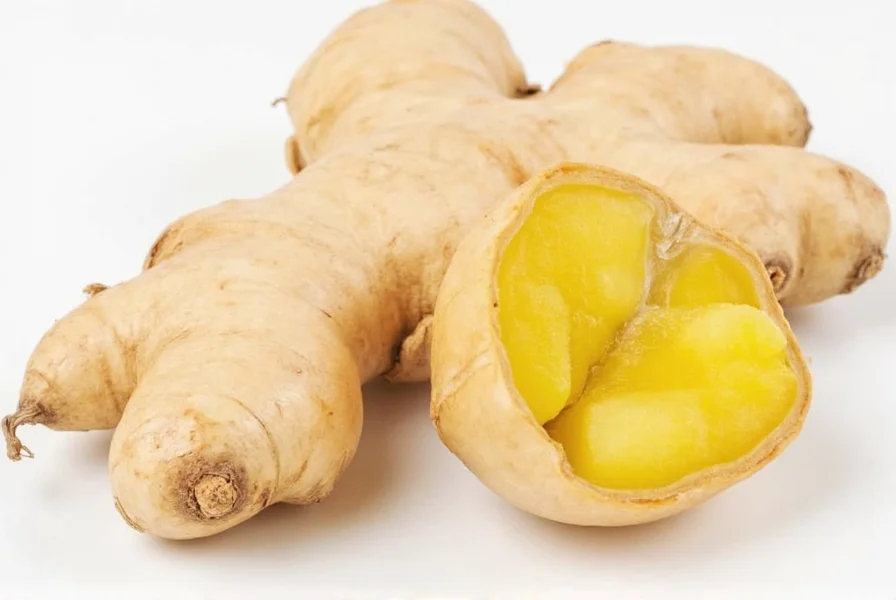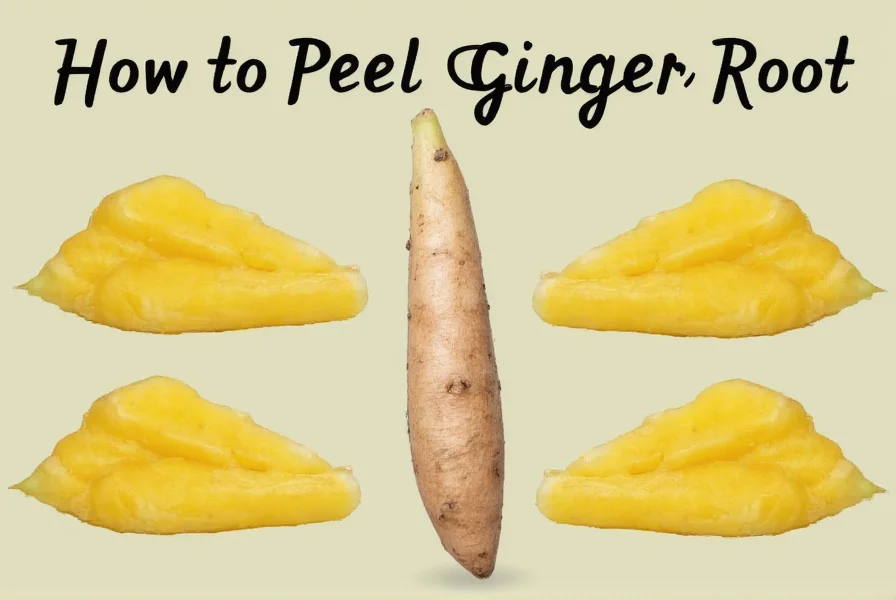Peeling ginger root doesn't have to be frustrating or wasteful. Many home cooks struggle with traditional peeling methods that remove too much of the valuable ginger flesh. The truth is, ginger's irregular shape and thin skin make it particularly challenging to peel with standard kitchen tools. Understanding how do I peel ginger root properly can save you time, reduce waste, and preserve more of ginger's potent flavor compounds that concentrate just beneath the skin.
Why Ginger Is Difficult to Peel
Ginger root presents unique challenges for peeling due to its knobby shape, thin skin, and soft flesh. Unlike potatoes or carrots with uniform shapes and thicker skins, ginger's irregular growth pattern means traditional peelers often remove too much edible material. The skin is actually quite thin - only about 1/16 of an inch thick - yet it protects valuable flavor compounds. When you use a knife or standard peeler, you might accidentally discard up to 20% more ginger than necessary.
Four Effective Methods to Peel Ginger Root
1. The Spoon Method (Most Recommended)
This professional chef-preferred technique minimizes waste while efficiently removing skin. Here's how to peel ginger with a spoon properly:
- Select a sturdy teaspoon (the smaller bowl provides better control)
- Hold the ginger firmly in one hand
- Place the edge of the spoon against the ginger skin at a 30-degree angle
- Gently scrape along the contour of the ginger
- Rinse the ginger under cool water to remove any remaining skin particles

This method works because the spoon's curved edge follows ginger's natural contours, removing only the thin skin layer. It's particularly effective for how to peel ginger without wasting it - you'll preserve up to 30% more usable ginger compared to knife methods. The spoon technique also works well on small ginger knobs that would be difficult to handle with other tools.
2. The Knife Method (Traditional Approach)
While less efficient than the spoon method, a paring knife offers precision for larger ginger pieces:
- Cut the ginger into manageable 2-3 inch segments
- Place one segment flat-side down for stability
- Hold your knife at a shallow angle against the skin
- Use short, controlled strokes following the ginger's shape
- Rotate the ginger as you work around each segment
This approach requires more skill to avoid removing too much flesh. It's best suited for larger ginger pieces where you need precise cuts for specific recipes. Many people searching for easy ginger peeling techniques find this method frustrating due to the learning curve.
3. The Vegetable Peeler Method
Standard Y-shaped peelers can work but often waste more ginger:
- Use only gentle pressure - pressing too hard removes valuable flesh
- Work around knobs carefully, rotating the ginger frequently
- Expect to lose more material on irregular sections
This method works best for relatively smooth ginger pieces but proves inefficient for knobby varieties. If you're wondering why is ginger hard to peel with standard tools, it's because most peelers are designed for uniform vegetables, not ginger's unique shape.
4. Alternative Methods Worth Considering
Some specialty tools exist but offer mixed results:
| Method | Pros | Cons |
|---|---|---|
| Ginger scraper tool | Specifically designed for ginger | Requires purchasing special tool; limited additional uses |
| Grater method | Works well if grating immediately | Not actually peeling; creates waste if you want whole pieces |
| Frozen ginger technique | Skin becomes brittle when frozen | Requires planning ahead; texture changes slightly |
Pro Tips for Handling Ginger
Mastering how to peel ginger root is just the beginning. These professional tips will enhance your ginger preparation:
- Peel right before use - Ginger oxidizes quickly once peeled, losing potency
- Keep ginger in water while peeling to prevent browning
- Store unpeeled ginger in a paper bag in the refrigerator crisper drawer
- Freeze peeled ginger in an airtight container for up to 6 months
- Use the peel for tea or stocks - it contains valuable flavor compounds
Common Ginger Peeling Mistakes to Avoid
Even experienced cooks make these errors when tackling how do I peel ginger root:
- Using too much pressure - removes valuable flesh and creates waste
- Peeling before measuring - always measure ginger before peeling as volume changes
- Using a dull knife - makes precise peeling impossible
- Washing before peeling - wet ginger becomes slippery and harder to handle
- Peeling too far in advance - peeled ginger loses potency within hours
Storing Peeled Ginger Properly
Once you've successfully peeled your ginger using the best method for your needs, proper storage maintains freshness:
- Place peeled ginger in an airtight container with a damp paper towel
- Store in the refrigerator for up to 1 week
- For longer storage, submerge in sherry or vodka (preserves flavor for months)
- Freeze in small portions for easy recipe use

Understanding how to store peeled ginger properly ensures you'll always have this versatile ingredient ready when needed, reducing food waste and saving money in the long run.
Conclusion
Learning the proper technique for how do I peel ginger root transforms a frustrating kitchen task into a quick, efficient process that preserves more of this valuable ingredient. The spoon method consistently proves most effective for home cooks seeking quick ginger preparation methods with minimal waste. By following these professional techniques and avoiding common mistakes, you'll maximize your ginger's flavor and nutritional benefits while minimizing preparation time. Remember that the key to perfect ginger preparation lies not just in peeling technique, but in proper handling and storage throughout the entire process.
Frequently Asked Questions
Can I eat ginger skin?
Yes, ginger skin is technically edible but has a tough, fibrous texture that most people find unpleasant. The skin also tends to collect dirt from the soil. While not harmful to eat, removing the skin provides a better texture for most culinary applications and ensures cleanliness.
Why is my ginger so hard to peel?
Ginger can be difficult to peel when it's very fresh and moist, or when using improper tools. Older ginger with dried skin actually peels more easily. The knobby shape makes it challenging for standard peelers. Using a spoon instead of a knife or peeler solves most peeling difficulties by following the ginger's natural contours without removing excess flesh.
How much ginger do I lose when peeling?
With traditional knife peeling, you can lose 15-25% of the ginger's weight. The spoon method reduces waste to 5-10% by removing only the thin skin layer. The amount lost depends on your technique, the ginger's shape, and the tool used. Irregular, knobby ginger naturally requires more careful peeling to minimize waste.
Should I wash ginger before or after peeling?
Wash ginger before peeling to remove surface dirt, but make sure it's completely dry before peeling. Wet ginger becomes slippery and harder to handle, making precise peeling difficult. After peeling, you can give it a quick rinse if needed, but this isn't necessary if you cleaned it properly before peeling.
Can I use a potato peeler for ginger?
Yes, you can use a potato peeler for ginger, but it's not the most efficient method. Standard Y-shaped peelers often remove too much flesh from ginger's irregular shape. If using a peeler, apply very light pressure and work slowly around the knobs. The spoon method generally preserves more usable ginger and works better on the challenging knobby sections.











 浙公网安备
33010002000092号
浙公网安备
33010002000092号 浙B2-20120091-4
浙B2-20120091-4